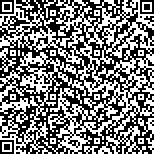| Quote
: |
曹梦醒,师哲,李勇.人参皂苷通过上调糖皮质激素受体表达对AIH小鼠肝脏的保护作用[J].湖南中医药大学学报英文版,2023,43(2):203-210.[Click to copy
] |
|
| |
|
|
| This paper
:Browser 1136times Download 413times |
| 人参皂苷通过上调糖皮质激素受体表达对AIH小鼠肝脏的保护作用 |
| 曹梦醒,师哲,李勇 |
| (上海中医药大学附属市中医医院, 上海 200071) |
| 摘要: |
| 目的 研究人参皂苷通过调节糖皮质激素受体与骨髓源性免疫抑制细胞(myeloid-derived suppressor cell, MDSC)增殖改善自身免疫性肝炎(autoimmune hepatitis, AIH)的机制。方法 小鼠分组为空白组、模型组、人参皂苷(AIH+GSS)组与地塞米松(AIH+DEX)组。使用S-100与佐剂构建AIH小鼠模型,以地塞米松作为阳性对照。通过流式细胞术检查外周血MDSC、调节性T细胞(regulatory T cell, Treg)、辅助性T细胞17(T helper 17 cell, Th17)细胞比例,检测血清谷丙转氨酶(alanine aminotransferase, ALT)、谷草转氨酶(aspartate aminotransferase, AST)活性,通过HE、Masson染色检查肝脏病理,分离外泌体并检测miRNA-223的表达情况,检查糖皮质激素受体(glucocorticoid receptor, GR)、精氨酸酶1(arginase type 1, Arg-1)、一氧化氮合酶(nitric oxide synthases, iNOS)与肌细胞特异性增强因子2C(myocyte-specific enhancer factor 2C, MEF2C)等蛋白的表达情况。结果 模型组小鼠血清ALT、AST水平较空白组均显著升高(P<0.001);与模型组相比,AIH+DEX组以及AIH+GSS组小鼠血清ALT、AST水平显著降低(P<0.001)。HE、Masson染色结果显示,相比于模型组小鼠,AIH+DEX组与AIH+GSS组界面区炎细胞浸润明显减少,小叶形态较正常,胶原纤维增生较少。模型组小鼠MDSC、Treg细胞数量较健康对照组显著下降(P<0.001),Th17细胞数量显著上升(P<0.01);AIH+DEX组与AIH+GSS组MDSC、Treg细胞数量高于模型组,Th17细胞数量下降(P<0.001,P<0.01,P<0.05);模型组miRNA-233表达显著高于空白组(P<0.001);AIH+GSS组与AIH+DEX组miRNA-223的表达水平均显著低于模型组(P<0.001)。模型组MDSC功能蛋白Arg-1、iNOS、MEF2C以及GR表达水平较空白组显著降低(P<0.001);AIH+DEX组和AIH+GSS组的蛋白表达水平较模型组明显上升(P<0.001)。AIH+GSS组Arg-1、iNOS转录水平略低于AIH+DEX组(P<0.01)。结论 与糖皮质激素类似,人参皂苷可通过上调糖皮质激素受体表达,抑制miRNA-223表达,促进AIH小鼠MDSCs增殖,调节Treg细胞与Th17细胞数量,降低血清ALT、AST活性,减轻AIH带来的肝细胞损伤。 |
| 关键词: 人参皂苷 自身免疫性肝炎 骨髓源性免疫抑制细胞 糖皮质激素受体 |
| DOI:10.3969/j.issn.1674-070X.2023.02.005 |
| Received:July 12, 2022 |
| 基金项目:国家自然科学基金项目(81873157,81573775)。 |
|
| Protective effects of ginsenosides on AIH mouse liver by upregulating glucocorticoid receptor expression |
| CAO Mengxing,SHI Zhe,LI Yong |
| (Shanghai Municipal Hospital of Chinese Medicine, Shanghai University of Chinese Medicine, Shanghai 200071, China) |
| Abstract: |
| Objective To explore the mechanism of ginsenoside for improving autoimmune hepatitis by regulating glucocorticoid receptor and myeloid-derived suppressor cells (MDSC) proliferation. Methods Mice were divided into blank group, model group, ginsenoside (GSS) group, and dexamethasone (DEX) group. The autoimmune hepatitis (AIH) models were established with S-100 and adjuvant. Dexamethasone group was the positive control. The proportion of MDSC, regulatory T cell (Treg) and T helper 17 cell (Th17) in peripheral blood was examined by flow cytometry, and the activities of ALT and AST in serum were detected. Liver pathology was examined by HE and Masson, and exosomes were isolated and miRNA-223 expression was detected. The expression of glucocorticoid receptor (GR), arginase type 1 (Arg-1), nitric oxide synthases (iNOS) and myocyte-specific enhancer factor 2C (MEF2C) were examined. Results The serum ALT and AST levels in model group were significantly higher than those in blank group (P<0.001). Compared with model group, serum ALT and AST concentrations in DEX group and GSS group were significantly lower (P<0.001). Compared with the model group, inflammatory cell infiltration in the interface area of DEX group and GSS group was significantly reduced, lobule morphology was more normal, and collagen fiber proliferation was less. Compared with healthy control group, the number of MDSCs and Treg cells in model group was significantly lower, while the number of Th17 cells was significantly higher (P<0.01). The number of MDSCs and Treg cells in DEX group and GSS group was higher than that in model group, while the number of Th17 cells was lower (P<0.001, P<0.01, P<0.05); miRNA-233 expression in model group was significantly higher than that in blank group (P<0.001). The expression level of miRNA-223 in GSS group and DEX group was significantly lower than that in model group (P<0.001). The expression levels of MDSCs functional proteins Arg-1, iNOS, MEF2C and glucocorticoid receptor GR in model group were significantly lower than those in blank group (P<0.001). But after intervention of DEX or GSS, the expression level of those was significantly higher (P<0.001). The transcription levels of Arg-1 and iNOS in GSS group were slightly lower than those in DEX group (P<0.01). Conclusion Similar to glucocorticoid, ginsenoside can inhibit miRNA-223 expression by upregulating glucocorticoid receptor expression, promote MDSC proliferation in AIH, regulate the number of Treg cells and Th17 cells, reduce the activities of ALT and AST in serum, and alleviate hepatocyte injury caused by AIH. |
| Key words: ginsenoside autoimmune hepatitis myeloid-derived suppressor cells glucocorticoid receptor |
|

二维码(扫一下试试看!) |
|
|
|
|


